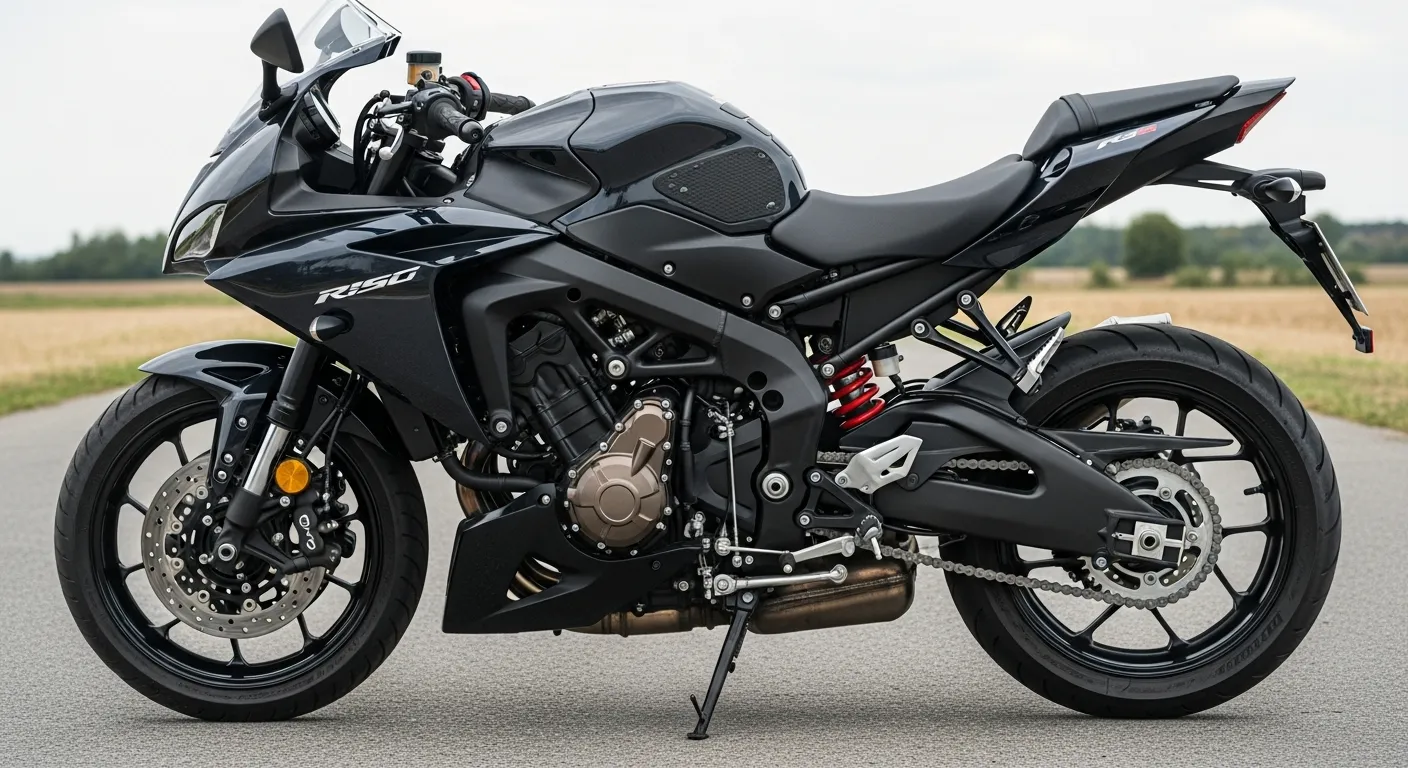Motorcycles are the high stress, delicately balanced world and performance does not merely refer to horsepower or aerodynamic shapes. More often than not, it is the presence of what is beneath the body work that distinguishes between a thrilling ride and bone-tiring ride. The suspension system of your motorcycle is that basic system.
Suspension tuning of a motorcycle is a complex conjunction of engineering and rider feel. It also has a direct control of how a bicycle takes a corner, dampens the road bumps and delivers power to the pavement. Suspension tuning is possibly the most effective and mostly maligned aid to rider comfort never mind being the best thing since sliced bread, as it also boosts safety, agility as well as rider confidence.
Motorcycle Suspension Tuning Essentials
This table can be seamlessly integrated into WordPress to provide clear, actionable insights:
| Category | Detail |
|---|---|
| Primary Components | Forks (front), Shock (rear), Linkages, Springs, Bearings |
| Key Adjustments | Preload, Compression Damping, Rebound Damping |
| Static Sag | Suspension travel measured without rider (bike on stand) |
| Rider Sag | Suspension travel with rider in full gear |
| Ideal Sag Range | 30–40mm for street bikes; ~25mm for track setups |
| Preload Adjustment | Increases (clockwise) or decreases (counter-clockwise) sag |
| Compression Damping | Controls suspension compression speed—too high = harsh, too low = bottoms out |
| Rebound Damping | Controls how quickly suspension returns after compression—too high = packs down, too low = bouncy |
| Tools Needed | Measuring tape, Allen keys, suspension spanners, pen & paper |
| Expert Resource | Dave Moss Tuning – Renowned suspension coach offering remote tuning services |
Step-by-Step: How to Tune Your Motorcycle Suspension Like a Professional
1. Inspect the Suspension System
A mechanical inspection should be done before proceeding with measurements or adjusters:
Fork Inspection: Visually inspect fork tubes and look for leaks, corrosion, of rust or pits. Check around fork seals by looking to locate the presence of oil.
Shock Inspection: Inspect the rear shock to see any leak or misshaped linkages or a crack in bushings.
Bearings and Linkages: Check that the swingarm and all linkages have free play in its bearings. Here wear influences sag and response of damping.
Cleanliness: There is no such thing as a responsive suspension that is not clean. Take off loc – adjusters and seals.
Tip: Lubricate linkage bearings once a year. Sticky linkages change the effects of rebound and preload considerably.
2. Sag Setup: The Backbone of Tuning
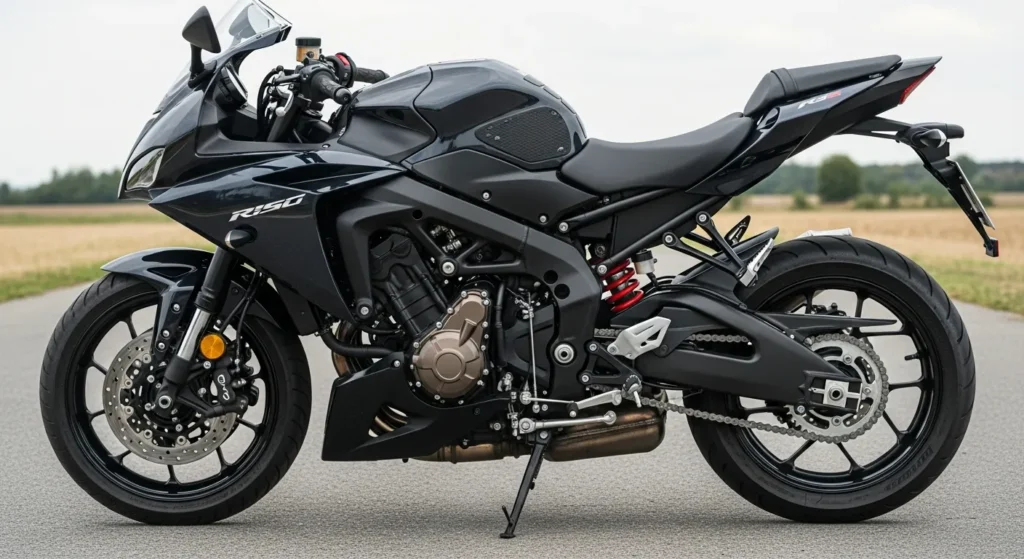
The sag of the suspension is the distance the suspension is compressed by a loaded weight. It is the initial customization that a rider is supposed to undertake because it calibrates the geometry of the bike according to your weight.
Types of Sag:
- Static Sag (Free Sag): without the rider. Is spring preload.
- Rider Sag: The reading is taken with the rider with full gear. Defines real riding geometry.
Ideal Measurements:
- Street: 30-40mm rider sag
- Track: 25-30mm rider sag
- Dirt Bikes: 100mm rear sag (different scale)
How to Measure:
- Open up forks/ shock all the way (bike on stand).
- Measure the distance between an axle and a stabilization point on the bike.
- Re-test the bike still off the stand (no rider).
- Repeat on with the rider in full gear, in natural position of riding.
- Measurements should be subtracted to get sag.
Adjust Preload Accordingly:
Too saggy? Make more preload (crowd spring).
Too thin Stamen? Reduce preload ( relax spring).
Note: Preload does not stiffen springs they alter the ride height.
3. Compression and Rebound Damping: Controlling Motion
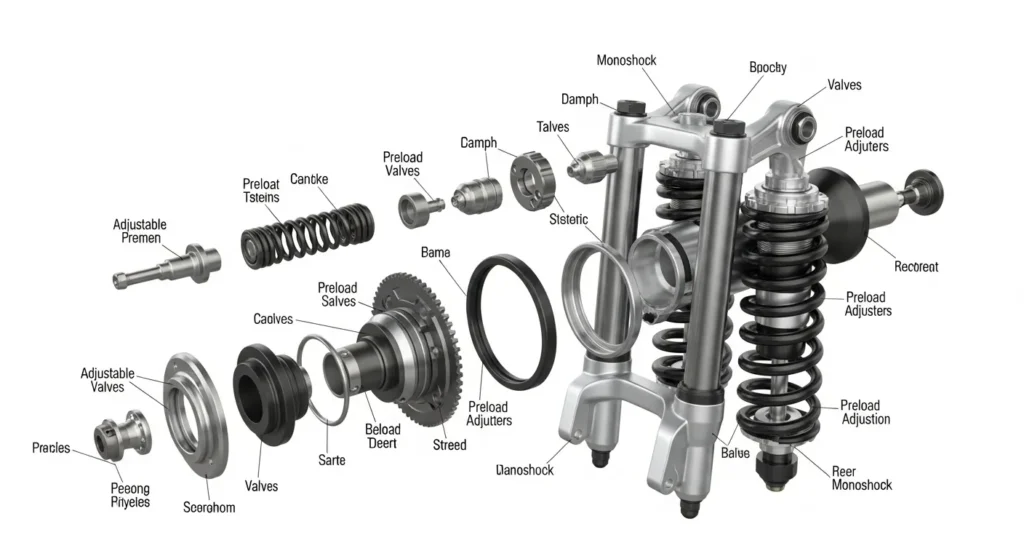
With securing sag, involved will be the reaction of the suspension to forces.
Compression Damping:
- Regulates the speed of compression of the suspension during a hit or a brake.
- Too Soft: Bottoms Out: Obviously, painful to bottom out, liable to get mushy within a foot or so of the braking distance.
- Too stiff: Rides harshly, jumps when going over a bump.
Rebound Damping:
- Regulates the rate of recovery of compressed suspension.
- Too Soft: Bike vibrates too much back and forth at the impact.
- Too Firm: Packs down too firm- the suspension does not get a chance to reset before another impact.
Adjustment Process:
- Start by turning all adjusters clockwise until they stop.
- Back them out to the factory baseline (check the manual).
- Make changes in single-click increments.
- Test ride after each change.
Adjustment Tip: The first and most important adjustment to always make is rebound, it affects the feel of the bike on every hit thereafter.
4. Fine-Tune Based on Riding Conditions
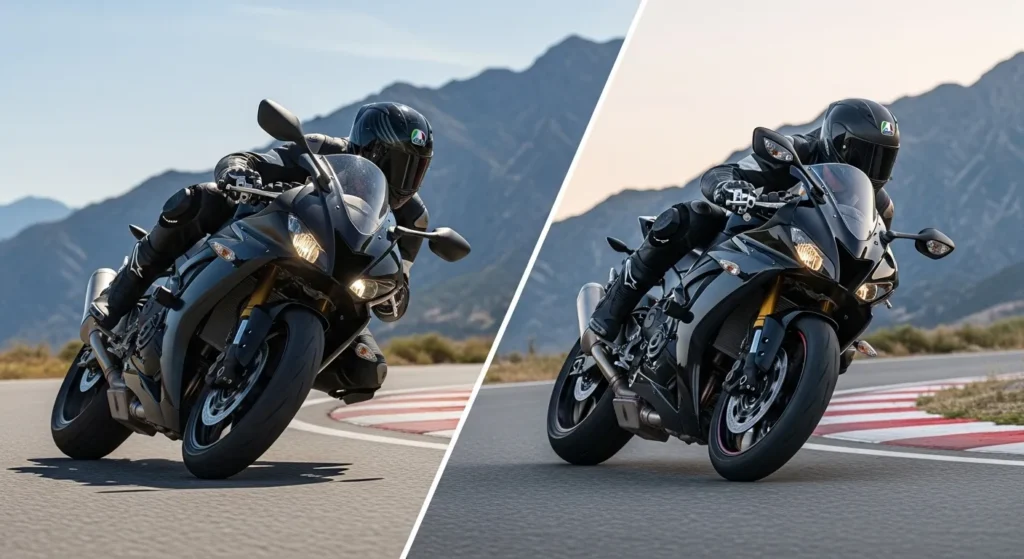
Suspension requirements obviously vary according to terrain, and riding style:
For Aggressive Cornering:
- Add front fork pre-load.
- Minor Increase in rear ride height.
- Analyse stiffer compression damping.
For Touring/Comfort Rides:
- Nullify compression damping.
- Rebound up a little to control.
For Braking Stability:
- Put in more front compression to minimize dive.
- Set rebound of the rear to aid in stabilizing the back during hard braking.
Common Issues and Fixes:
| Symptom | Likely Fix |
| Front end dives too much | Increase front preload or compression damping |
| Rear bounces after bumps | Increase rear rebound damping |
| Bike wobbles during lean | Check rear preload and front rebound |
| Harsh ride over small bumps | Decrease compression damping front and rear |
| Feels unstable in fast sweepers | Increase preload; check for worn suspension bearings |
5. Suspension Tuning for Load and Pillion Riding

Tuning is not a fixed thing. In case you habitually transport luggage or somebody, you have to adjust:
Use rear add preload to adjust to added weight.
Set up more rebound damping to avoid rear-end bouncing.
Make the compression a little bit lower to be more comfortable.
Electronically adjustable preload Modminded bikes (e.g. BMW ESA, Duc)ati Skyhook) allow on-the-fly changes. Manual setups require tools and measurement.
6. When to Go Pro: The Role of Suspension Specialists
Whereas there are 80 per cent of needs that DIY tuning is all right, there are cases when professional skills are needed:
Track Riding: It needs specific valves and special spring rates.
Odd Weight Distribution: motorcycle touring went set up, and aftermarket components.
Constant Handling complaints: The handling is becoming ambiguous or erratic in spite of tuning.
The factory specifications assume that the average rider of average size will be riding the average roads. Outside that bell curve means you are not getting the best performance as Coach Can Akkaya of Superbike-Coach states.
Professionsals such as Dave Moss also provide remote tuning services that customizes their setups through videos and measurements.
The Future of Suspension: Intelligent Systems
Technology of suspension is developing at high rates. Over the last few years we have witnessed bikes which have semi-active or full active suspension systems that can literally adapt themselves to road conditions as they occur.
Examples:
- Multistrada V4 Ducati: Skyhook Suspension EVO
- BMW R1250 GS Dynamic ESA (Electronic Suspension Adjustment)
These systems operate by changing on-the-fly compression and rebound using sensor, accelerometers and integration to ECUs. Convenience such innovations approach to perfection, it is still essential to know the principles underlying such a complex system as suspension, even smart systems depend on certain fundamentals of mechanics.
Suspension Tuning: A Broader Perspective
Why does suspension go beyond performance? It is because it connects the rider and the road. A properly adjusted suspension enables a rider to concentrate on the direction and surroundings rather than struggling with the balance. It alleviates tiredness, enhances self-confidence and most importantly, increases safety.
Motorcycling fatalities are commonly blamed on the loss of control, so tuning suspension is not only a performance add-on, it is a way of cutting down risk.
What is more, having more motorcycle riders join the world of motorcycling after the pandemic, when they usually get it through entry-level or middle-level models, the capacity to teach them suspension tuning can take the whole culture of riding to a new level.
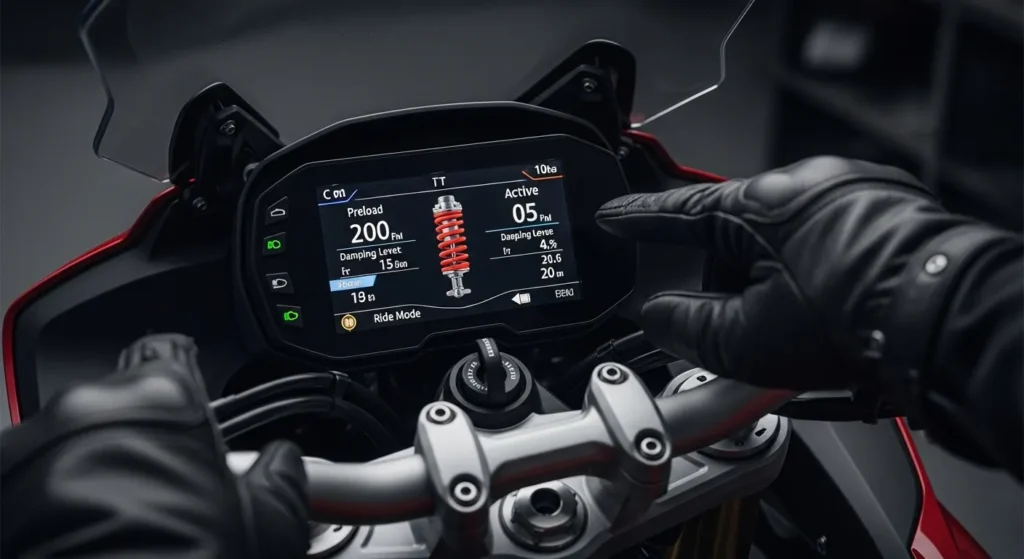
Final Thoughts: Tune the Machine, Empower the Rider
Motorcycle suspension tuning is not an accessory to racing, and it is a must-have feature to every biker who is particular about control, comfort, and safety. With the right knowledge of the geometry of your bike and knowing how to adjust preload, damping and sag, you can gain performance that you never knew your bike could achieve.
As it is said in racing circles: Power is nothing without control. That control is suspension.
Therefore the next time you think that your bike is behaving weirdly don not point fingers at the bad road. Instead fix the ride.
